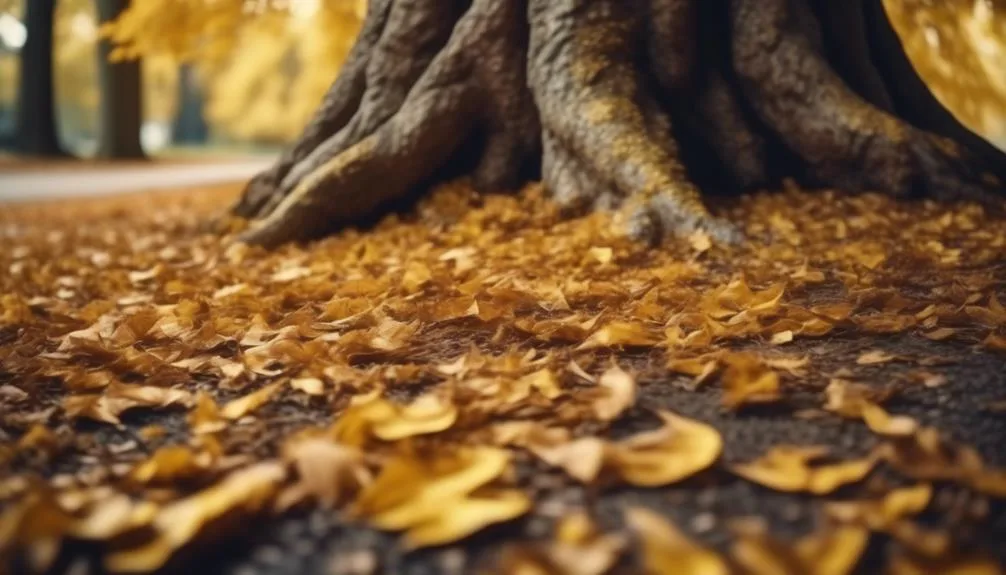Is your cedar tree losing leaves, leaving you concerned? Discover the root causes and solutions for this common issue.
We'll cover how to recognize health issues affecting your cedar tree and steps to restore its vitality.
Stay tuned for practical insights to help your cedar tree thrive once more.
Common Causes of Cedar Leaf Loss
If you've noticed your cedar tree losing its leaves, it's important to understand the common causes behind this issue to effectively address and resolve it.
Soil nutrition plays a crucial role in the health of cedar trees. Poor soil nutrition can lead to leaf loss as the tree struggles to obtain essential nutrients.
Environmental stress is another significant factor. Harsh weather conditions, such as extreme heat or drought, can cause cedar trees to shed their leaves as a survival mechanism. Additionally, pollution, compacted soil, or excessive salt in the soil can also lead to environmental stress.
To address these issues, consider testing the soil to ensure it has the necessary nutrients, providing appropriate irrigation during dry spells, and minimizing environmental stressors to promote healthy cedar tree growth and prevent leaf loss.
Identifying Cedar Tree Health Issues
When observing your cedar tree and its leaf loss, it's important to be able to identify potential health issues that could be contributing to this problem. One common issue is pest infestations. Look for signs of insect activity such as holes in the leaves, webs, or visible pests. If you suspect pests, consider contacting a local arborist to properly identify and address the infestation.
Another possible cause of leaf loss is drought stress. Check the soil around your cedar tree for dryness and consider if the tree is receiving adequate water. Signs of drought stress include wilting, curling, or browning of the leaves. Proper watering and mulching can help alleviate drought stress and improve the overall health of your cedar tree.
Steps to Restore Cedar Tree Health
To restore the health of your cedar tree, start by conducting a thorough inspection of the tree's overall condition and environment. Consider performing a soil test to identify any nutrient deficiencies and pH imbalances. Once you have the results, replenish the soil with the specific nutrients lacking to promote tree health.
Ensure that the tree is receiving adequate water, especially during dry periods, to maintain soil moisture levels. Proper watering techniques can prevent stress and leaf loss.
Additionally, adopt appropriate pruning techniques to remove dead or diseased branches and encourage new growth.
Maintenance Tips for Cedar Trees
For effective maintenance of your cedar trees, regularly inspect the foliage and branches for signs of pests, diseases, or nutrient deficiencies. Pruning techniques and a proper watering schedule are essential for keeping your cedar trees healthy.
Here are some maintenance tips to ensure the well-being of your cedar trees:
- Pruning Techniques: Regularly prune dead or diseased branches to promote healthy growth and improve air circulation within the tree.
- Watering Schedule: Establish a consistent watering schedule, especially during dry periods, to keep the soil moist but not waterlogged.
- Fertilization: Consider fertilizing your cedar trees with a balanced fertilizer to provide essential nutrients for optimal growth and health.
Professional Help for Cedar Tree Care
Consider hiring a certified arborist or tree care professional to assess and address any complex issues with your cedar trees, ensuring their long-term health and vitality.
Professional care is essential for maintaining the well-being of your cedar trees, especially when facing persistent leaf loss or other concerning symptoms. Tree experts possess the knowledge, experience, and specialized equipment needed to accurately diagnose problems and provide targeted solutions.
By entrusting your cedar tree care to qualified professionals, you can benefit from tailored treatment plans and proactive maintenance strategies that promote resilience and vigor. These experts can also offer valuable insights into environmental factors, pest management, and overall tree health, helping you make informed decisions to safeguard the beauty and longevity of your cedar trees.
Don't hesitate to seek out professional assistance to ensure the optimal care of your beloved cedars.
Conclusion
To ensure the long-term health of your cedar tree, it's essential to address any issues promptly and provide regular maintenance.
By identifying and addressing factors such as pests, disease, or environmental stress, you can help your cedar tree thrive once again.
Keep a vigilant eye on its health and consider seeking professional help to maintain its beauty and vitality for years to come.

My interest in trees started when I first saw the giant sequoias in Yosemite.
I was a teenager then, and I remember thinking, “I need to learn more about this.”
That moment stuck with me.
A few years later, I went on to study forestry at Michigan Tech.
Since graduating, I’ve worked in a mix of hands-on tree care and community education.
I’ve spent over ten years helping people understand how to plant, maintain, and protect the trees in their neighborhoods.
I don’t see trees as just part of the landscape.
They are living things that make a real difference in our daily lives.
